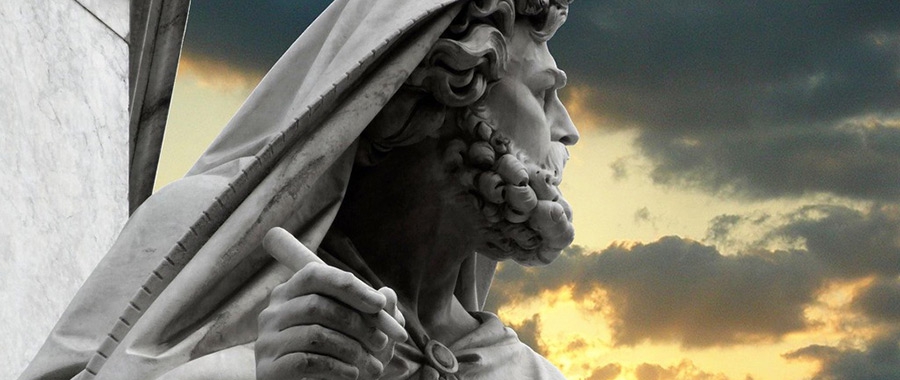The views expressed in our content reflect individual perspectives and do not represent the authoritative views of the Baha'i Faith.
Isaiah 9:6 is one of the most famous prophecies of all time. Called the “Yuletide prophecy,” Christians universally acclaim it as heralding the advent of Jesus Christ.
Baha’u’llah proclaimed his fulfillment of the same prophecy when he wrote: “This is the Father foretold by Isaiah.” – The Summons of the Lord of Hosts, p. 63.
Jewish interpreters understand Isaiah 9:6 (9:5 in the Hebrew Bible) to refer to Hezekiah (or to God).
Of these three interpretations of Isaiah 9:6—Christian, Baha’i, and Jewish—which one is correct? How can three different, apparently contradictory interpretations of Isaiah 9:6 be true? How can they be harmonized? This answer may surprise you: All three!
You might recall this statement in Part 19 of this series: “In brief, Baha’is may understand prophecies on at least three levels: (1) historical-contemporary interpretation; (2) the history of interpretation; and (3) Baha’i interpretation. All three may happily co-exist.”
Contextual interpretations of Isaiah 9:6 tend to support traditional Jewish interpretations. In this important prophecy, Isaiah refers to the Messiah by four name-phrases, commonly translated as: (1) Wonderful Counselor; (2) Mighty God; (3) Everlasting Father; (4) and Prince of Peace. The King James Version of the Bible, however, gives five names:
For unto us a child is born, unto us a son is given: and the government shall be upon his shoulder: and his name shall be called Wonderful, Counsellor, The mighty God, The everlasting Father, The Prince of Peace. – Isaiah 9:6.
According to a number of scholars, the addition of an extra comma between “Wonderful” and “Counsellor” led to this confusion. This four-fold royal titulary is a proclamation. But for what purpose? That depends upon the interpretation, and the interpretations vary, of course.
Whoever Isaiah may have had in mind, the prophet uses Middle Eastern courtly language in figuratively describing the child as “the mighty God”—in the sense that this future King will exercise divine authority. Scholars refer to this ideology as “sacral kingship” or “divine right.”
So how can all three interpretations be valid at one and the same time? Can they be believed all at once?

Thomas Kelly Cheyne (1841–1915).
Enter Thomas Kelly Cheyne, who “was the most eminent western academic to become a Baha’i during Abdu’l-Baha’s ministry,” according to Joanna Hawke, who wrote the biographical article on “Cheyne, Thomas Kelly (1841–1915), biblical scholar” published by the Oxford Dictionary of National Biography (2004). We previously met Professor Cheyne in Part 34 of this “Figuring Out Prophecy” series.
Among his other publications on Isaiah and other Old Testament prophets, Professor Cheyne published two major commentaries on Isaiah: (1) The Book of Isaiah Chronologically Arranged (1870) and (2) The Prophecies of Isaiah, in two volumes (1884). In Cheyne’s estimation, Isaiah was “the most gifted and powerful of those early prophets who are known to us by written records.” Professor Cheyne translated Isaiah 9:6 as follows:
For a child is born unto us, a son is given unto us, and the government resteth upon his back, and his name is called, Wonder-Counsellor, God-Mighty-one, Everlasting-Father, Prince of Peace; increased is the government and to peace there is no end. – Isaiah 9:6, translated by the Rev. T. K. Cheyne, M.A., The Prophecies of Isaiah: A New Translation with Commentary and Appendices, pp. 60–62.
Christians universally interpret Isaiah’s prophecy as heralding the advent of Jesus Christ. In appreciating how Christ has fulfilled Isaiah 9:6, are we to understand that Christ is somehow “God” in essence, just as Christ manifested “God” in nature? Professor Cheyne explains that Isaiah 9:6 is not to be taken literally, but figuratively:
It would be uncritical to infer that Isaiah held the metaphysical oneness of the Messiah with Jehovah, but he evidently does conceive of the Messiah, somewhat as the Egyptians, Assyrians, and Babylonians regarded their kings, as an earthly representation of Divinity. … No doubt this development of the messianic doctrine was accelerated by contact with foreign nations. – Ibid.
Or, as John Edgar McFayden, author of The Book of the Prophecies of Isaiah wrote: “Deity is in him, but he is not Deity.” – p. 86). On Isaiah 9:6, Professor Cheyne further comments:
Its combination of enthusiasm and moderation gives the passage a unique position among Messianic prophecies; to assign it to post-exilic times (which were not incapable of fine as well as poor literature) involves no disparagement. It is clearly an independent composition attached by the editor by means of the linking verse, 9:1 [8:23]. Observe the vagueness of 96[5]ƒ., which implies that the hope of the Messiah was already well defined in the popular mind … . – T.K. Cheyne, “Isaiah (Book),” Encyclopaedia Biblica, p. 2195.
In “Jewish Interpretation of Prophecy,” Professor Cheyne begins as follows:
I will not attempt a Praeparatio Evangelica on a large scale, and will leave on one side the claimants of Messiahship, whose history would form an interesting chapter in a Christian apologia. Far be it from me to judge them, or to pretend to have sounded a deep psychological problem. Nor will I do more than indicate the deep and prophetic dissatisfaction with Judaism expressed … [because] it stands apart from the regular development of Jewish thought. The same remark applies to the Jewish movement in Persia towards Babism, the most modern outburst of nominally Mohammedan mysticism and, as you probably know, not without Christian affinities. – T. K. Cheyne, “Jewish Interpretation of Prophecy,” The Old Testament Student, p. 421.
Here, the name “Babism” refers to the Baha’i Faith, which evolved from the Babi religion.
As a general principle of interpretation of prophecy, Professor Cheyne claims: “The same right by which the Talmudic doctors adapted the Scriptures to their age appertains to the wise men of our own totally different age. The question is that of the legitimacy of doctrinal and ritual developments” (ibid., p. 423).
Professor Cheyne was alive to the fact that Isaiah 9:6 can be said to have been fulfilled successively in history. Thus the “Yuletide prophecy” may be considered a “triple prophecy” in successively, and expansively, referring to: (1) Hezekiah; (2) Jesus Christ; and (3) Baha’u’llah.
In a Tablet (epistle) revealed for Faris Effendi, the first Christian Baha’i, Baha’u’llah proclaimed to Christian clergy universally:
O concourse of bishops! Trembling hath seized all the kindreds of the earth, and He Who is the Everlasting Father calleth aloud between earth and heaven. Blessed the ear that hath heard, and the eye that hath seen, and the heart that hath turned unto Him Who is the Point of Adoration of all who are in the heavens and all who are on earth. – Baha’u’llah, translated by Shoghi Effendi in The Promised Day Is Come, p. 101.
















Comments
Sign in or create an account
Continue with Googleor